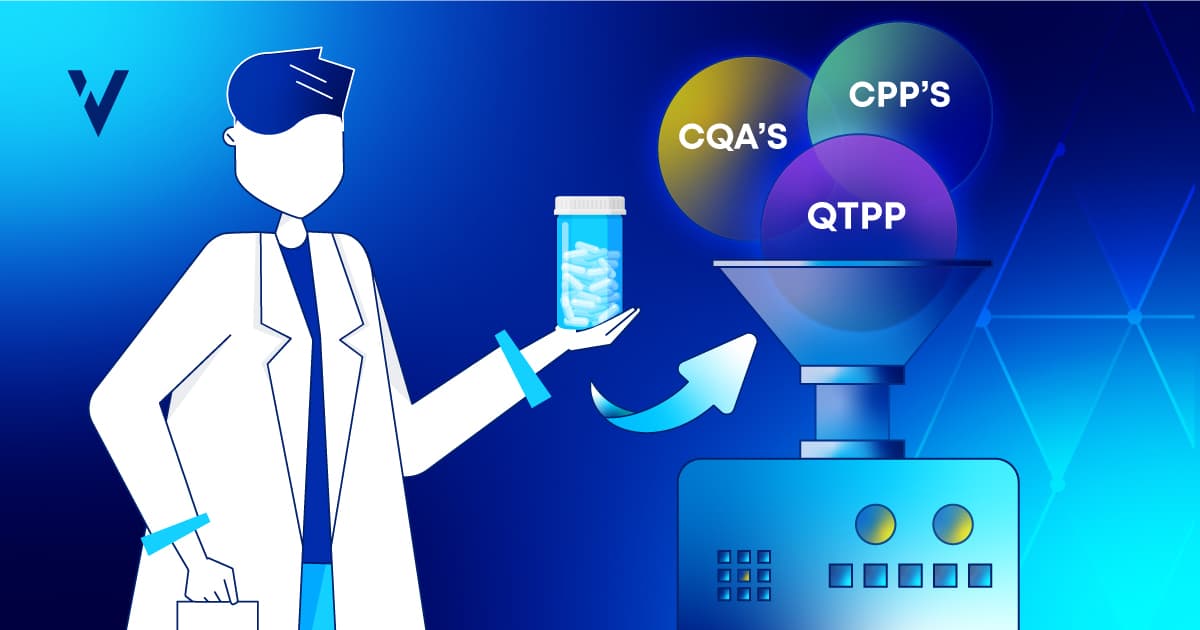Handling post-approval changes (PACs) can be challenging. There are different timelines and submission rules, and on top of that, optimizing your processes can be difficult.
That's why having a clear post-approval change management (PACM) protocol to guarantee regulatory approval is so important. In this blog post, we’ll discuss the International Council for Harmonization (ICH) Q12 guideline and the tools you can use to accelerate PAC approval.
Some Context About PACM
The origin of PACM can be traced back to the introduction of Quality by Design (QbD) principles in product development and manufacturing. Specifically, this evolution can be attributed to a set of established IHC guidelines: Q8, Q9, Q10, and Q11.
It's worth noting that these guidelines did not provide extensive clarity on how to incorporate the principles of product lifecycle management. There was a lack of a harmonized approach to technical and regulatory considerations for lifecycle management to materialize a vision of post-approval “operational flexibility” during the commercial phase.
Recognizing this gap in the regulatory landscape, the IHC took action in 2017 by releasing a new guideline titled Technical and Regulatory Considerations for Pharmaceutical Product Lifecycle Management, commonly referred to as ICH Q12.
Distinct in its focus, ICH Q12 delves into various facets of the pharmaceutical landscape, encompassing a wide array of domains such as biologics, active pharmaceutical ingredients (APIs), and even drug-device combinations.
What is in ICH Q12?
ICH Q12 encompasses a set of five invaluable tools that not only facilitate agile lifecycle management but also exert a positive influence on both industry practices and regulatory oversight. The tools are the following:
- Change Categorization: The ability to categorize changes efficiently.
- Protocols for Change Management: The creation of protocols designed to manage specific groups of changes, enhancing control and compliance.
- Establishing Quality and Regulatory Commitments: Defining the foundation for quality and regulatory commitments related to manufacturing conditions.
- Risk-Based Understanding of Change Criticality: The establishment of a risk-based comprehension of change significance, differentiating between “do & tell” and “tell & do” approaches.
- Integration of Modern Pharmaceutical Quality Systems: Placing modern pharmaceutical quality systems at the core of the lifecycle management process, promoting continuous improvement and enabling agile, compliant, and robust pharmaceutical operations management.
The ICH Q12 guideline introduces a clear definition of “Established Conditions” (ECs), which are the elements in the submission that “are considered necessary to assure product quality and therefore would require a regulatory submission if changed post-approval.” These result from development efforts and are reflected in an appropriate control strategy (critical process parameters, critical material attributes, elements of analytical procedures, etc.).
In essence, a significant part of this guideline revolves around tools that enable a streamlined approach to implementing changes throughout the product lifecycle.
How Does That Accelerate PAC Approvals?
Implementing a PACM protocol has many advantages, such as:
- Enhanced Predictability and Transparency: Achieving a clear understanding of the necessary requirements and studies essential for change implementation.
- Reduced Reporting Burden: Lowering the reporting category for changes, resulting in shorter review timelines.
- Potential Regulatory Collaboration: Facilitating the possibility of future agreements and collaboration between your company and regulatory authorities.
And that’s what makes the difference in PAC approval.
Creating a PACM Protocol
Making post-approval changes can be difficult due to varying timelines and submission requirements and process optimization challenges. Therefore, knowing how to create a PACM protocol is critical. To make it easier, we’ve created a step-by-step guide that outlines how to do it.
The Benefits of Using a QRM Platform
In the process of developing a PACM protocol, a quality risk management (QRM) platform grounded in the principles outlined in ICH Q9 (R1) can play a pivotal role in streamlining and enhancing the overall process. The effective use of QRM and knowledge management in your product will create the necessary transparency through a risk- and science-based rationale to justify what chemistry, manufacturing, and controls (CMC) elements should be established conditions, making the regulatory approval smoother.
A robust QRM platform will open a wide array of opportunities toward this goal, such as:
- Enhanced Risk Assessment: A QRM platform helps optimize risk assessments, allowing stakeholders to understand the potential impacts of the proposed changes. This aids in suggesting an appropriate reporting category that aligns with the nature and magnitude of the change.
- Better Impact Assessment: A QRM platform facilitates the description of specific tests and recommends acceptance criteria using sophisticated risk management tools. This ensures that the assessment of the change's impact after PACM protocol approval is accurate and well-informed, minimizing uncertainties and potential disruptions.
- Comparability Assessments: A QRM platform may enable a side-by-side comparison of multiple assessments. This functionality is instrumental in visualizing and understanding the differences in risk profiles before and after the proposed change. These insights can be invaluable for making informed decisions regarding the change's implementation.
In summary, regardless of whether your product is already commercial or in development, a robust QRM platform acts as a valuable ally in the PACM protocol development process, offering tools and functionalities that streamline risk assessment, enhance impact evaluation, and provide a clear view of the effects of changes, ultimately contributing to effective PACM.
ValGenesis specializes in facilitating the QRM of post-approval change management. You can learn more about it here or contact one of our experts for more information.

